As an Amazon Associate, I earn from qualifying purchases.
Learn how to make a Vertical Strawberry Planter with just a few affordable supplies. These DIY strawberry towers are PVC-free and are perfect for small gardens, balcony gardens, and greenhouse planting.
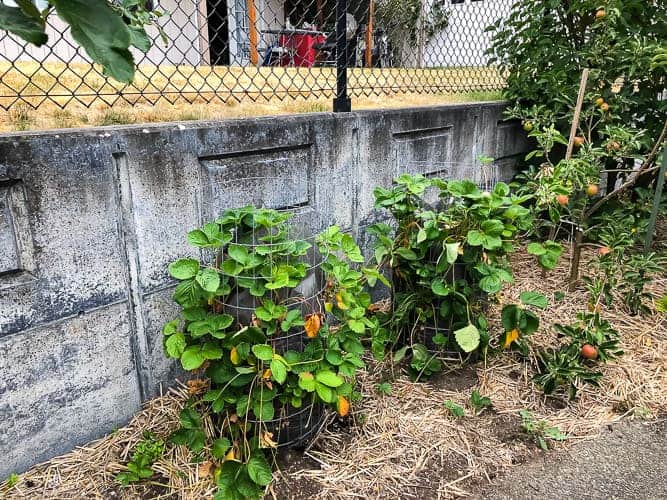
Everybody loves strawberries! But sadly, store-bought strawberries are usually sad little flavorless pink blobs. That is why strawberries are a classic plant for the home garden. Homegrown just tastes so much better!
Today, I’m going to walk you through how to grow amazing strawberries in a vertical strawberry planter. These DIY strawberry planters are easy to make, affordable, and they don’t take up a lot of space.
How to Use Fresh Strawberries
Strawberries – what a lovely crop to have growing in your front yard! I love using homegrown strawberries for Low-Sugar Strawberry Jam, Gluten-Free Strawberry Rhubarb Crisp, and Homemade Strawberry Ice Cream.
And if you end up growing too many to eat (what a lovely problem to have), try your hand at Strawberry Puree or freezing strawberries.
Are Strawberries Hard to Grow?
Not really. They tend to do well in most climates and can tolerate below-average soils. But, as with all plants, there are things that can happen to derail even the best-laid plans.
The big issues with strawberries are:
- rot (too much moisture and mildew)
- dry fruit (not enough consistent watering)
- pests (slugs, snails, birds, deer, and potato bugs for the most part. And my berry-loving kids.)
What is the Best Way to Grow Strawberries?
At the end of the day, the “best” way is what works for you and your garden. I have grown strawberries in raised beds, in the ground (and then had to thin my strawberry plants two years later), hanging baskets, and now these homemade Vertical Strawberry Planters.
Each method has pros and cons, but I can tell you that these DIY strawberry towers combine all the wonderful aspects of the others in one berry-centered package.
Since the fruit is not laying on the ground, mildew and mold aren’t as much of a problem. And as the strawberries are growing vertically, it is easier for small kids, people with bad knees, and anyone who may have a physical disability to pick their own berries. No more strawberry picking yoga:
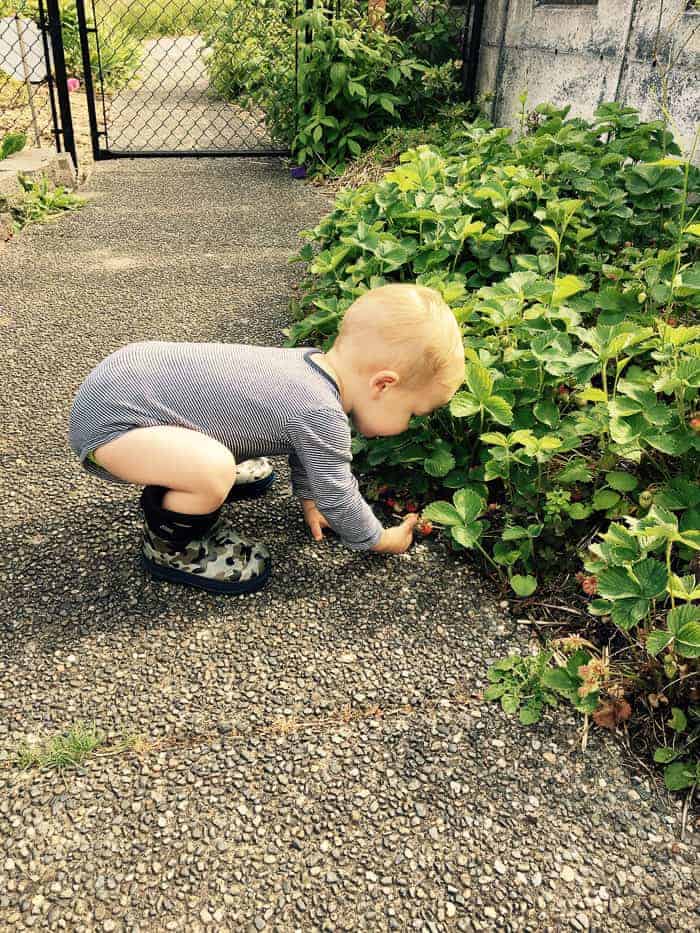
Vertical Strawberry Planter Supplies
For these strawberry towers you’ll need:
- Galvanized Welded Wire Mesh Garden Fence
- Wire cutters
- Landscaping fabric -OR-
- Straw (my preference)
- Potting or garden soil
- Box knife/razor blade
The landscaping fabric or straw will be placed around the inside of the fencing to hold your soil in. Landscaping fabric can be a bit controversial as most contain petroleum products. This brand is marked as food-safe, but do use your best judgment.
I made four towers total as testers – two with landscaping fabric and two with straw. The plants grew exactly the same, over-wintered the same, but I did find the towers lined with straw were easier to water. The straw is also natural compost and unlike the landscaping fabric doesn’t contain anything questionable.
The downside to using straw is it’s not something many people have just hanging around. Plus, a bale of straw is a lot of straw and you’ll only use a tiny fraction of it for these strawberry planters.
Pro tip: use the remainder of the straw as mulch in the garden or as part of a lasagna garden. I also use straw for chicken bedding in Dowton Eggy – the custom chicken coop my husband and father-in-law built.
How to Make a Vertical Strawberry Planter:
Decide on the width of your tower. We made ours about 18 inches across and 3 feet tall.
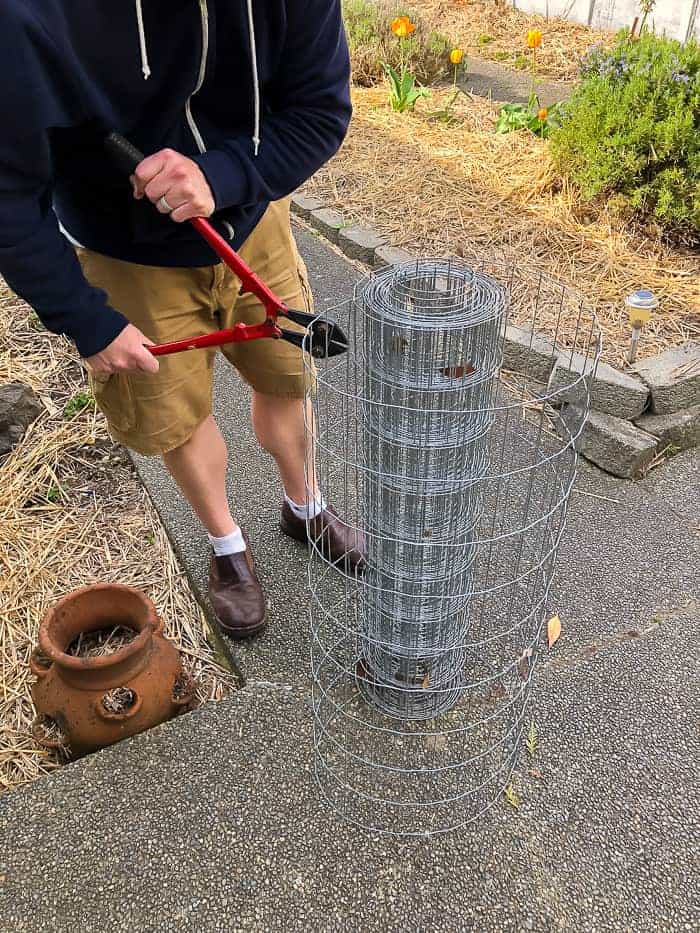
We counted the number of columns to keep each tower the same size. See the red highlight in the photo below to show what I mean by column.
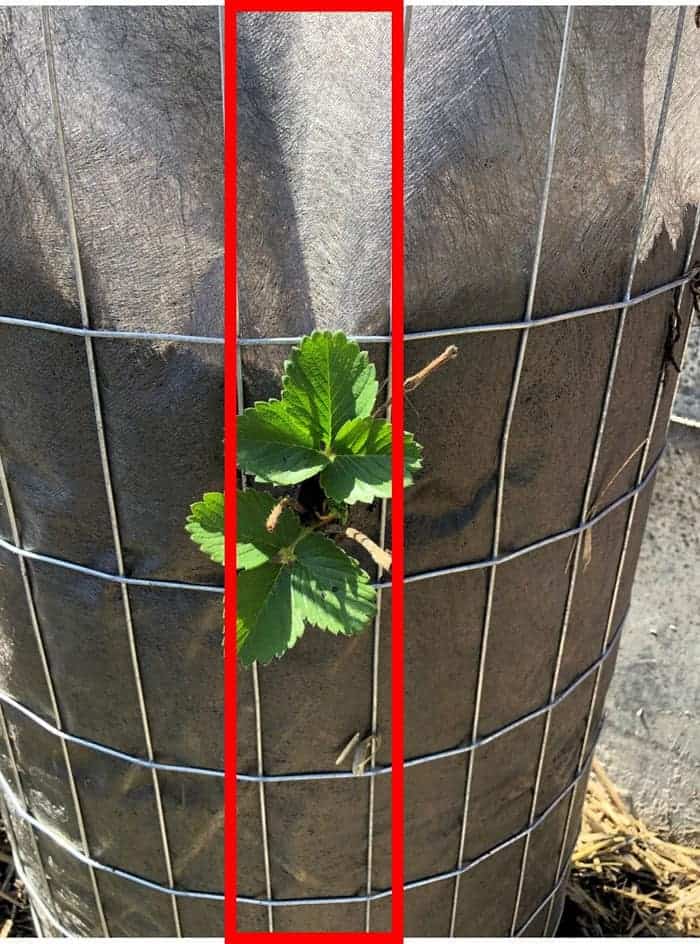
When you have decided how many columns wide to make your planter, go one column past and then cut the fencing from the roll using wire cutters. Arrows in the photo below will show how the wire should be exposed on one side of the fencing.
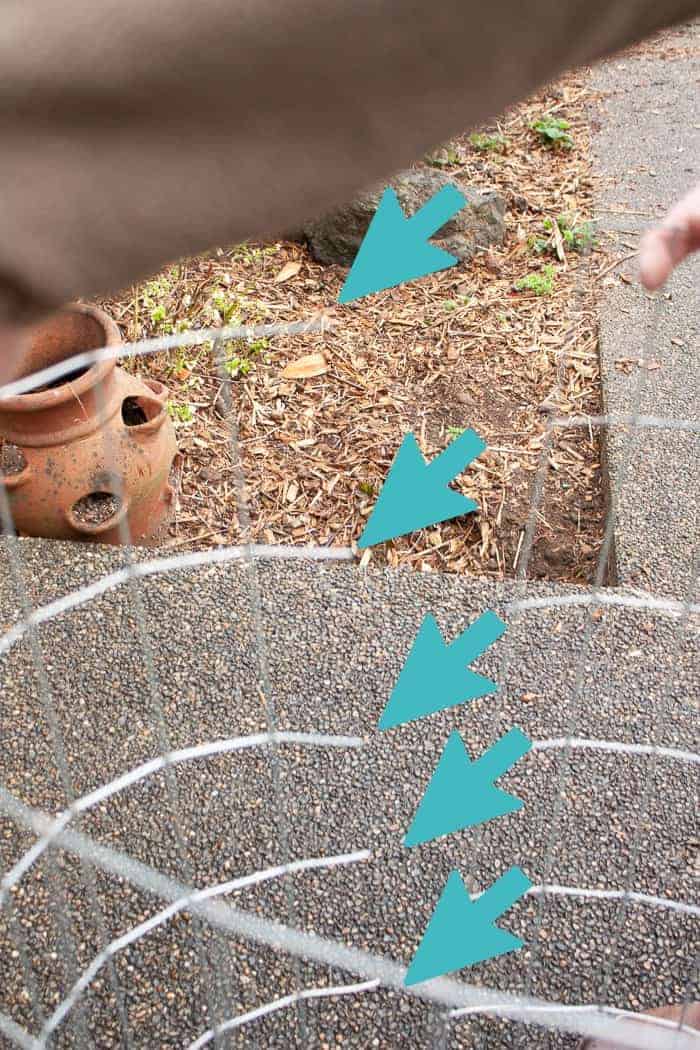
Create a cylinder with the fencing and bend the exposed horizontal wires over the joined edges of the tower. This will hold your vertical strawberry tower together and create the form.
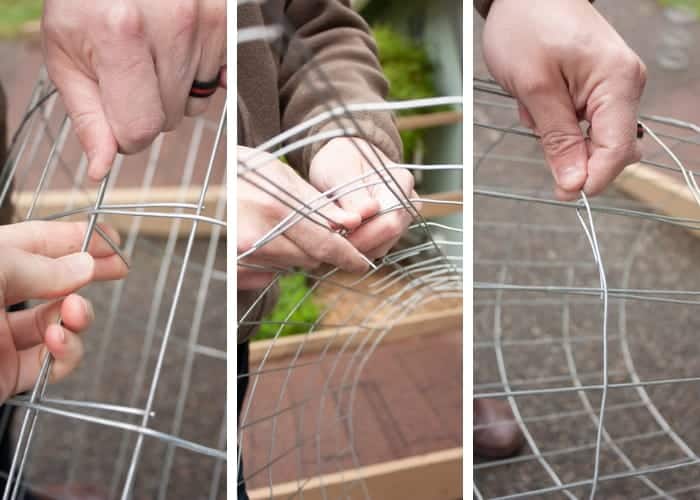
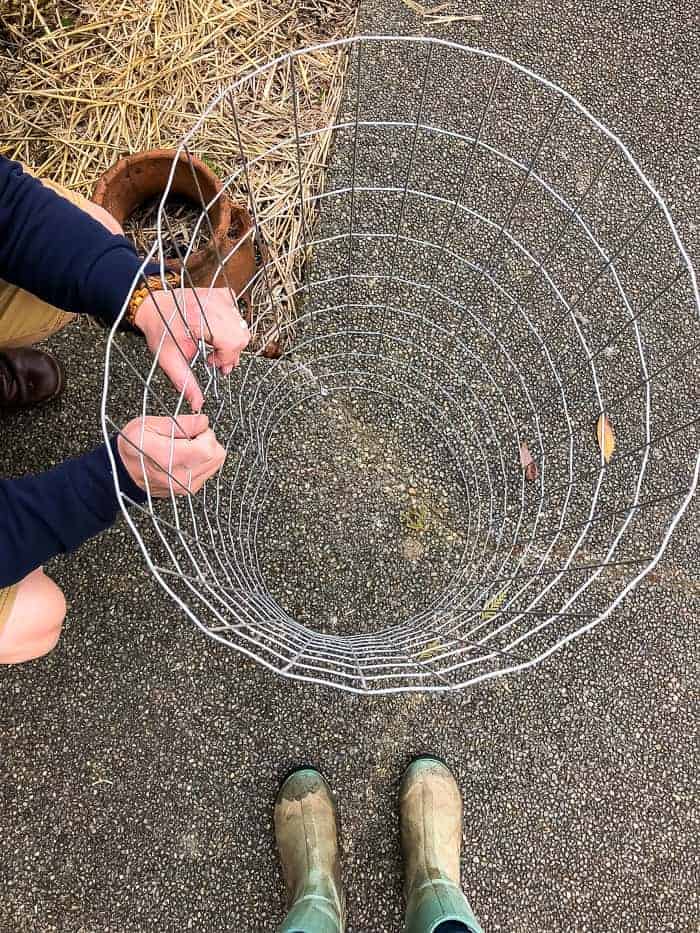
Now you’re going to line the inside of your strawberry tower.
If you’re using landscaping fabric:
Measure it to be slightly larger than the tower. Fit it around the inside of the fencing. I found it easiest to hold the fabric along the top of the fencing using clips (find 10 more uses for these dollar store clips) or clothespins.
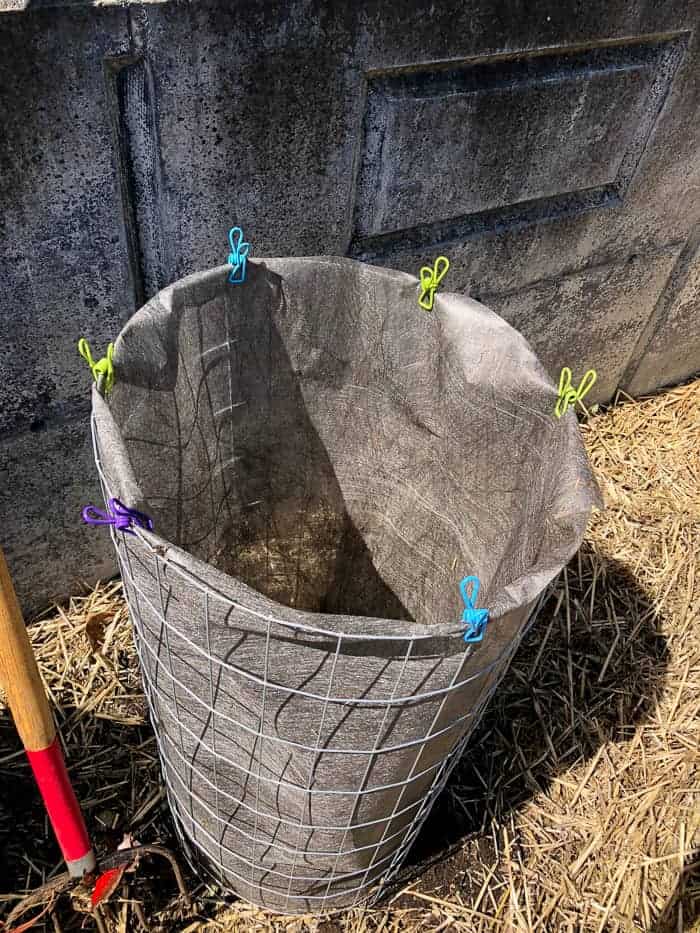
Next, fill the tower about 30% full with potting or garden soil. Take a box cutter and make slits in varying places, keeping about 2-3 inches between slits.
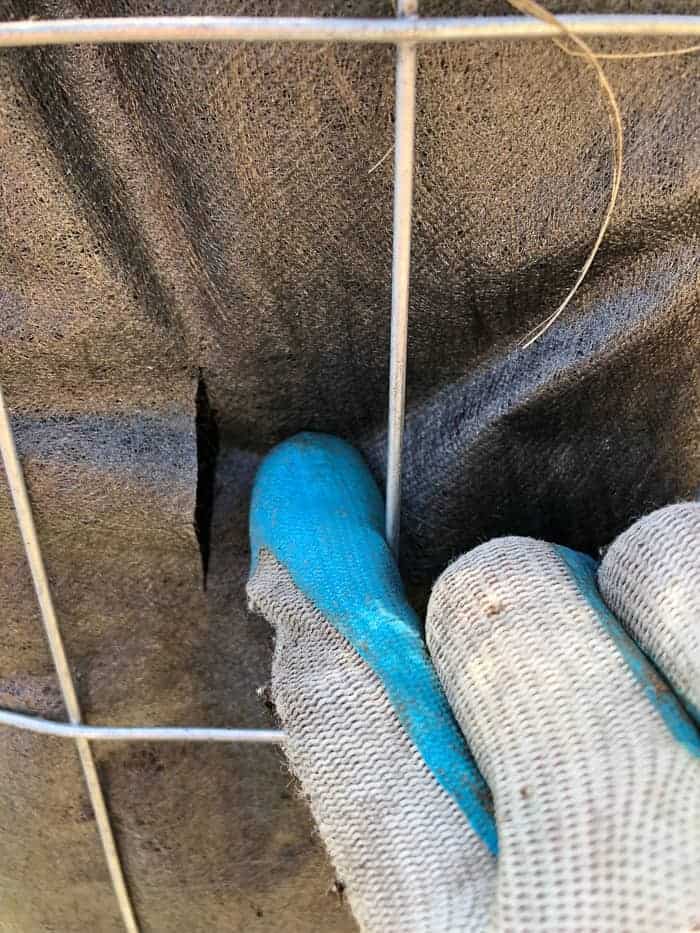
Gently wiggle a strawberry plant into the slit from the outside. You’ll be inserting the root into the slit so that the rest of the plant is positioned outside of the tower.
Water the soil from the top of the tower, and then fill another 30% of the tower with soil. Continue to add more strawberry plants and soil until you’ve reached the top of the tower.
If you fill the whole thing with soil and then make the slits in the fabric, the weight of the dirt will make it really hard to get everything planted.
I also added two to three more plants to the open top of the vertical strawberry planter.
If you’re using straw:
Add a few handfuls of straw to the inside of the tower. Use your hands to push the straw to the sides of the strawberry planter, creating an empty hole in the center. Add your soil to that hole.
From the outside of the planter, use 2-3 fingers to create a hole in the straw and gently add your strawberry plant into the space.
Water the soil from the top of the tower, and then fill another 30% of the tower with straw and soil. Continue to add more strawberry plants and soil until you’ve reached the top of the tower. I added two to three more plants to the open top of the strawberry planter.
What is the Best Time of Year to Plant Strawberries?
Strawberries can be planted as soon as the ground is workable in the spring (find your average first and last frost date here). You can continue to plant throughout the growing season, but new plants will need intensive watering if planted during the summer months.
Plant any new berry plants well before your first frost date to allow them to establish solid roots before winter.
How to Buy Strawberry Plants
Strawberry plants come in two main forms – bare root and live plants (also called “plugs”).
Bare root plants typically are sold in packs of 10 or 25. They literally are what they sound like – just roots. Buying bare root plants is more affordable than plugs but they usually won’t bear any fruit in the first year.
Bare root plants can save you money but they have to be viewed as an investment for the future. Check out some of my favorite bare root varieties here.
Buying live plants/plugs is 100-300% more expensive, but they will produce fruit in the first year. I love the variety called Seascape and this is a great deal!
How to Water Your Vertical Strawberry Planter
I’ve tried multiple systems over the last year for watering these DIY strawberry planters. And the easiest solution is what worked the best. Lovely when that happens.
Simply position a hose to rest on the top of the soil and turn it on to very low pressure. Water until the soil at the bottom of the tower looks damp. Depending on your weather conditions, this could take up to 30 minutes. I tend to position the hose, turn it on, and walk away while I attend to other garden tasks, or make dinner.
How often you’ll need to water will depend on your particular climate.
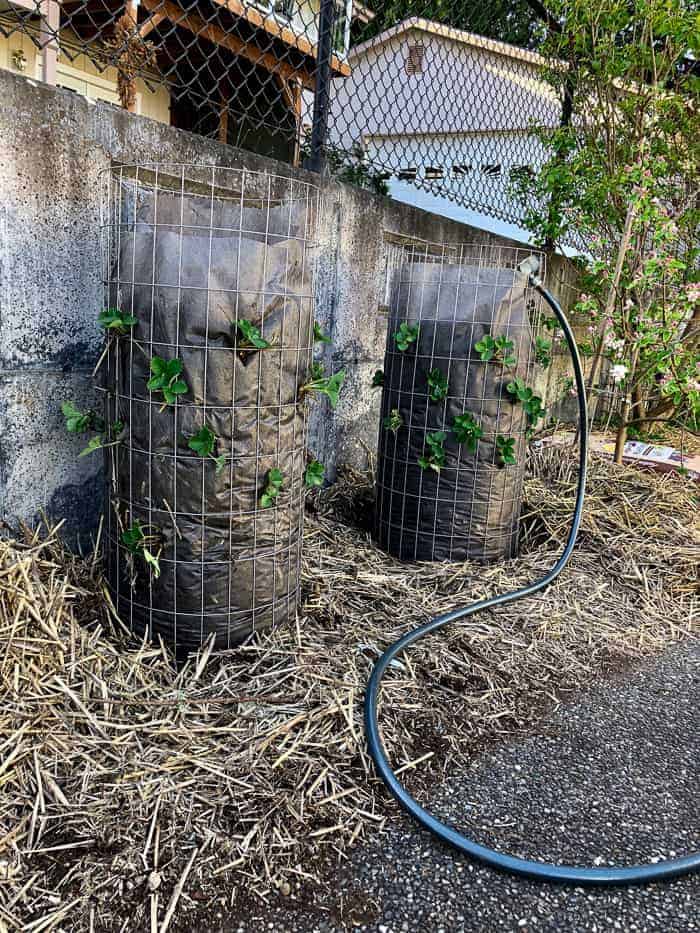
Why Not Use PVC Pipes or Wooden Strawberry Planters?
There are so many wonderful tutorials out there on growing berries in PVC pipes and homemade wooden strawberry pyramids. Neither of those would work for my garden for various reasons.
PVC – my front yard is my garden and I try to keep it looking clean and tidy. Big white PVC pipes would stick out like a sore thumb. Plus, I hear they’re a pain in the butt to keep the soil moist.
Wooden strawberry pyramids – I live in the Seattle area, and we’re well-known for our damp weather. I also live near salt water, so between rainy conditions and the salt air, wooden structures aren’t the best for my climate.
After lots of trial and error, the best solution turned out to be these super easy to make planters.
Planting Strawberry Runners
Almost all varieties of strawberries will produce runners. Runners are the children/offspring of the main strawberry plant. They grow out of the parent plant and if left to their own devices will create a whole new strawberry plant. It’s like the ultimate BOGO sale -free strawberry plants!
When my plants started putting out runners in the towers, I allowed them to get long enough until I could direct the tip of the runner into a new portion of the planter. For the towers with the landscaping fabric, that means I did need to cut a new hole when I planted the runner. For the planter with straw, I just wiggle the runner in-between the straw barrier.
Within a week or so, your runner will take root and start growing a new plant. How freaking cool is that? Depending on where your planters are located, you may have some free ground space. You can also direct and plant runners around the base of the tower to spread out for even more strawberries.
I mean, who doesn’t want more strawberries?
Winterizing Strawberry Planters
I live in zone 8, which typically means rainy springs, warm summers with a few weeks of hot temps, mild falls, and moderate winters. My strawberry towers stay outside uncovered in the winter and they’re perfectly fine.
If winterizing strawberry plants is more in-depth for your growing conditions, I would build your vertical strawberry planter on either rolling carts or garden dollies if possible. They are extremely heavy once filled, so moving them after the fact would be challenging and messy.
If they’re designed to be mobile from the start, it would be easy to roll them into a greenhouse once the threat of frost happens. Another idea would be to build your planters in an area where you construct hoop houses during winter conditions.
You may also choose to cover them with floating row covers or plastic sheeting for the duration of winter. You have options!

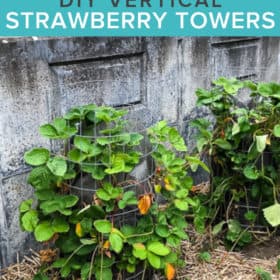
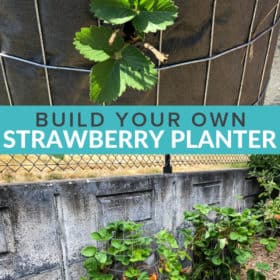
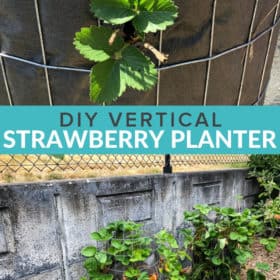
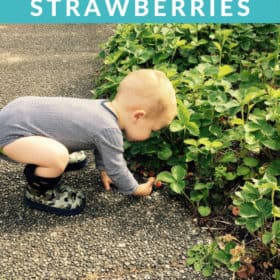
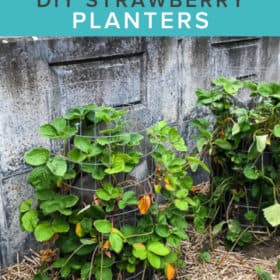
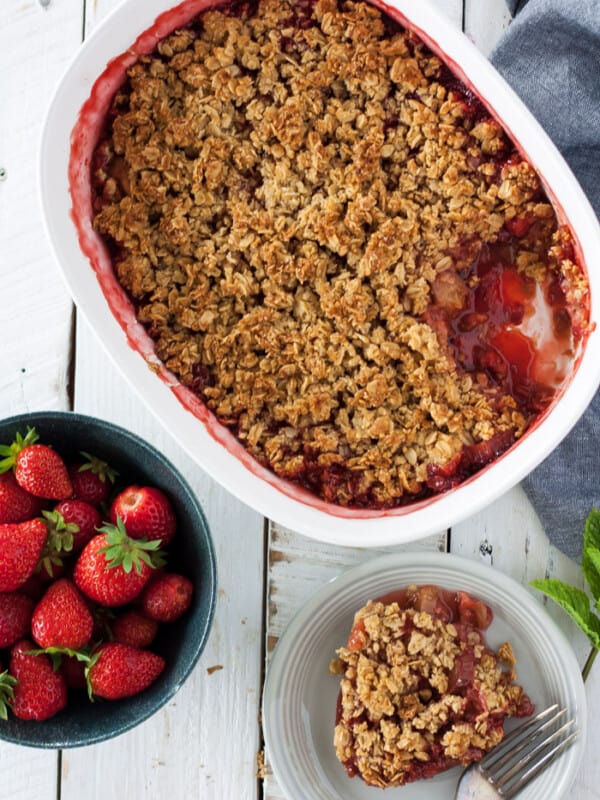
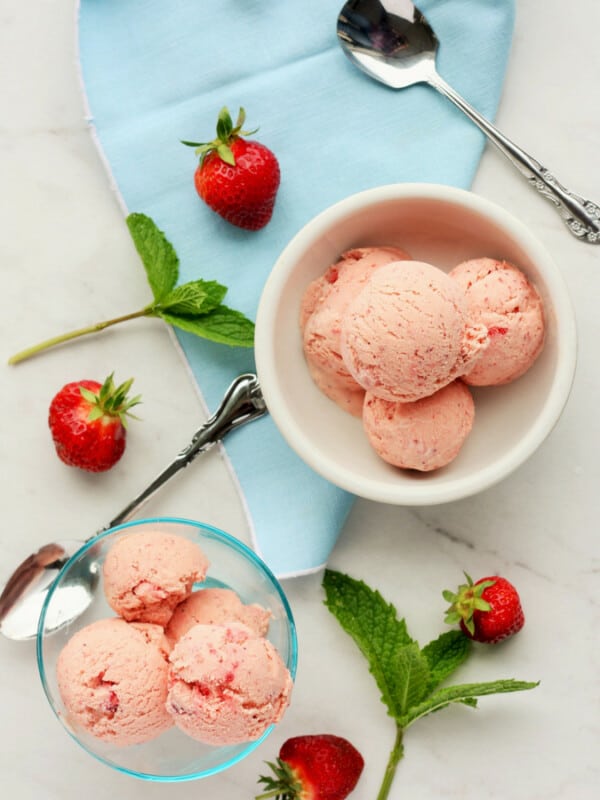
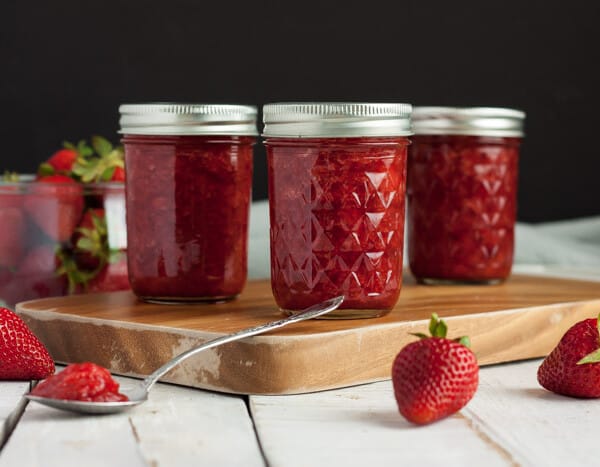
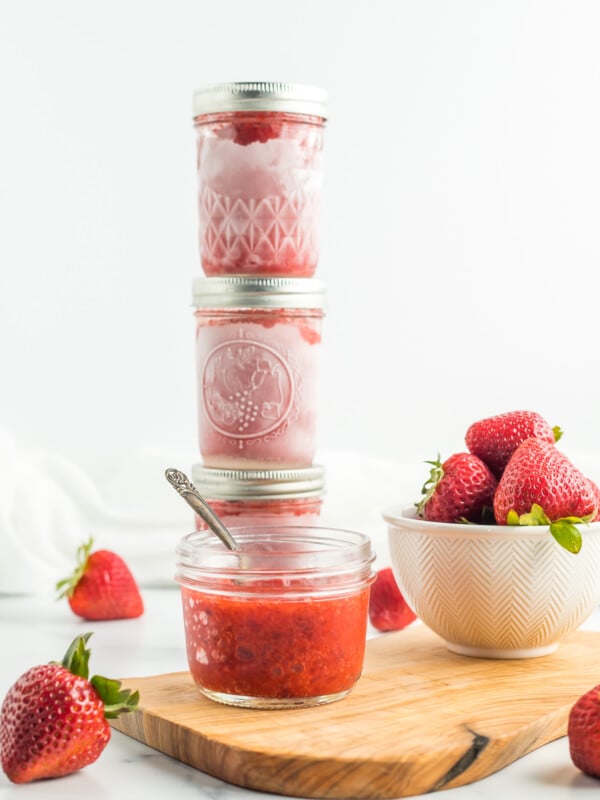
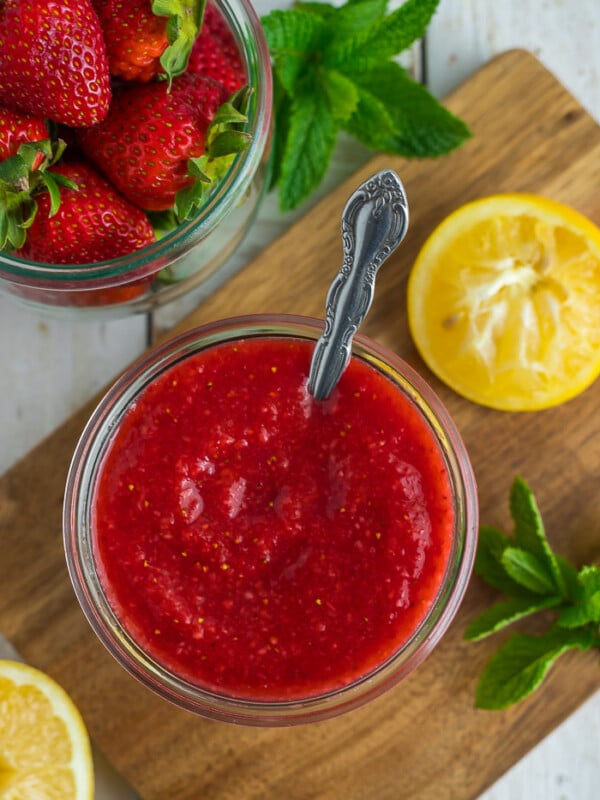
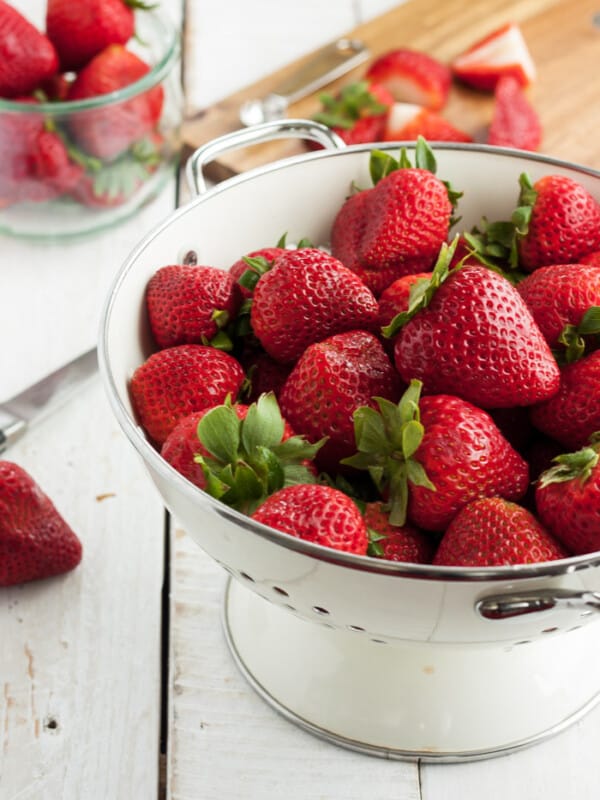






I have a sunroom: glass ceiling and one wall; two other walls, one with a window and door. Do you think I could grow strawberries inside here, in some kind of vertical system? Sounds like a good solution to avoid pests. Also, could you give me an idea on the productivity? Like X number of plants could produce X quarts of strawberries per season? I know that would vary a lot…just trying to get a ballpark. Thanks.
It would depend on your climate whether the sunroom would work for strawberries. I also grew up with a sunroom and it would be 100F+ in the summer, and things would freeze inside during the winter. Strawberries prefer a temperate climate and cool growing conditions without excessive heat. Additionally, most strawberries only fruit during certain times of the year, so keeping them in warmer growing conditions might not lead to year-round production.
In terms of production, there are way too many factors (climate, what type of berries you choose, the soil, how often you fertilize, etc.) to even begin to give you an estimate. Additionally, there are so many kinds of strawberries that produce anything from huge berries to tiny alpine-sized fruit.
Such a wonderful vertical strawberry planter! And I love the pictures that show clearly each step of the process. Thanks for this, Sarah!
You make straw sound like a safer solution. But unless it comes from an organic wheat or grain farm I would disagree. If the straw is the remains of GMO plants it could contain an herbacide as well as pesticides. People don’t think about these things when it comes to recycling natural waste products. I didn’t until I was looking for materials. And it depressed me that I had to work as hard as I did to find safe sources. It goes the same for mulch and manures. If the animals are eating chemically treated foods, as cows and horses do not completely digest them, the manures can contain unwanted chemicals. You have to know your source. And unfortunately it takes work to tract down safer materials.
I’ve been using the same kind of tower to plant potatoes and garlic in for years (I use the straw bale gardening method so I use second-year straw in those towers). I have found that the soil and straw in these towers compress considerably throughout the growing season and I have to add more soil/straw every spring to bring it back up to where I want it to be for planting (creating enough space below the surface for my potatoes, etc.). QUESTION for you: How do you maintain strawberry plants in a tower where the soil/straw will undoubtedly compress?
I’ve dumped them out a few times and started over with the soil. Most years I just add more soil, but I do like a deep clean every few years.
Cotton or linen fabric would be a great alternative to landscape fabric.
I fear that would only last one season though.
At 18 inches across and 3 feet tall, how many plants fit in your original planting of a tower?
I went conservative with probably 20 (ish). My towers kind of back up against a cement wall, so I don’t plant on the back 20%.
I’ve now created my straw, “strawberry towers, forever!” One lingering question: with the tower filled only one-third with soil and the roots tucked into straw, just how do nutrients get to their roots? Thanks!
Nothing is easy with eyes closed. 🙂
I do a top dressing of compost (we have chickens so I use composted chicken manure) every few months. I stop adding in April when my plants start to come back alive and don’t start again until they’re done fruiting (around late Juneish).
Hi there, Sustainable Cooks,
So happy to find your tutorial BEFORE I ripped out all my strawberry runners! I’ve followed your instructions for welded utility fence towers…made 6, today, in an hour and a half. Tomorrow, I will carefully place the towers among the beds. I happen to have straw and worm castings to nestle the roots in the towers. It’s fall, now, but the plants generally winter over nicely on Whidbey Island. They are in such abundance and produce lovely berries, but between the slugs, birds and squirrels, harvests from ground level plants have been disappointing. I’m looking forward to trying out the towers as an alternative growing method! Thanks!
We’re in the same zone and yes, the plants overwinter very well around here! You’ve totally got this (picture me giving you a thumbs up).
I am glad you linked this on IG today! We picked up 6 starts on my birthday, but I already know we will need more.
Off to read your raspberry trellis post now, because we need more raspberries also!
There is no such thing as too many strawberries or raspberries, so I say definitely get more!
Looks like a great idea! We are going to try to get some raised beds moved this weekend. I may see about making some towers. I wanted to get some of those ceramic strawberry pots for the deck area.. but the towers seem more affordable. And our new landlords left behind quite a few strawberry plants to get us started. Only problem I foresee with the gardening is there is a big flock of wild turkeys that live on our property!
I have one ceramic strawberry pot but they’re so limited in terms of how many plants you can grow. I eventually gave up but I keep it in a part of my garden because I can wrap my hose around it and it keeps it off the blueberries.
Oh, wild turkeys sound very cool to see but I bet they’re going to be total punks in the garden.